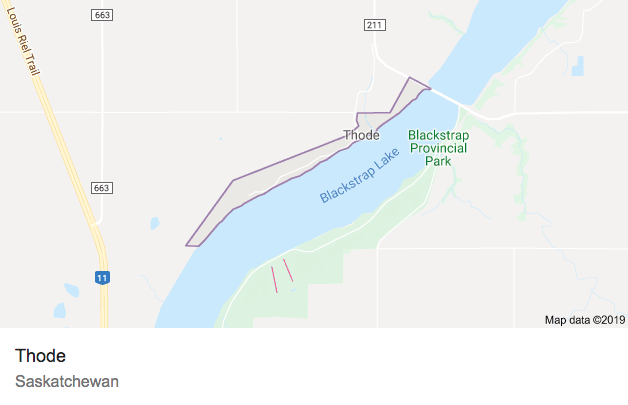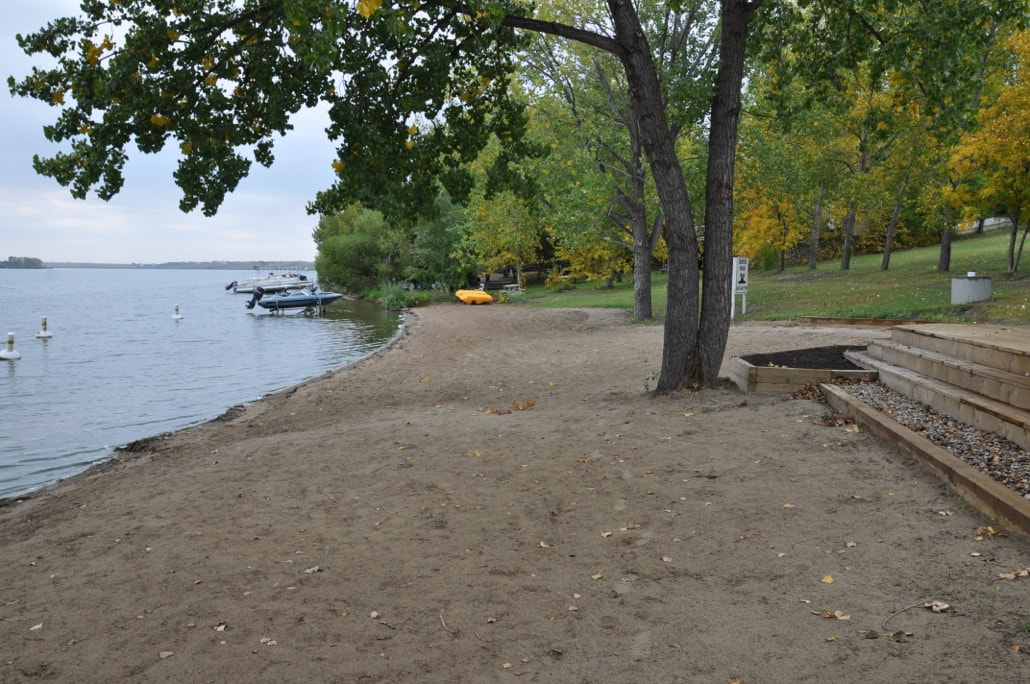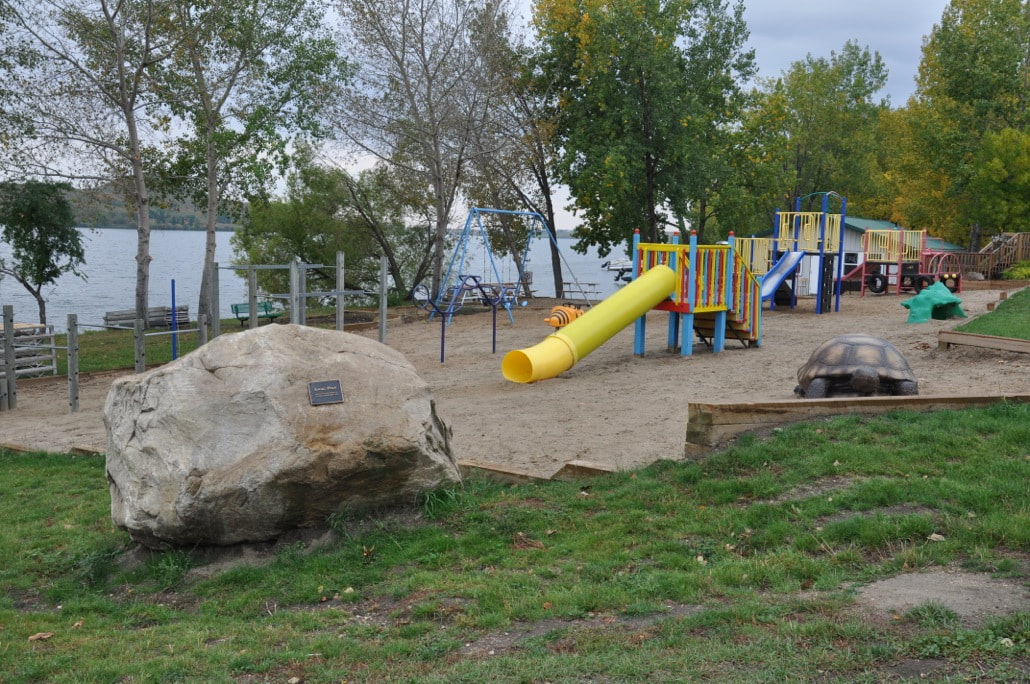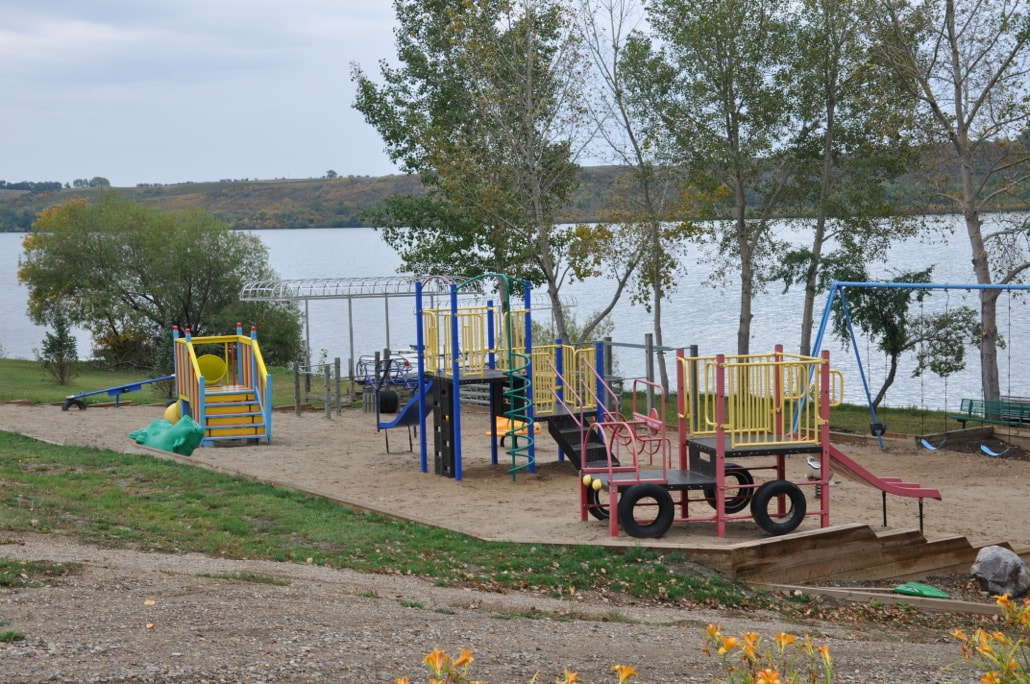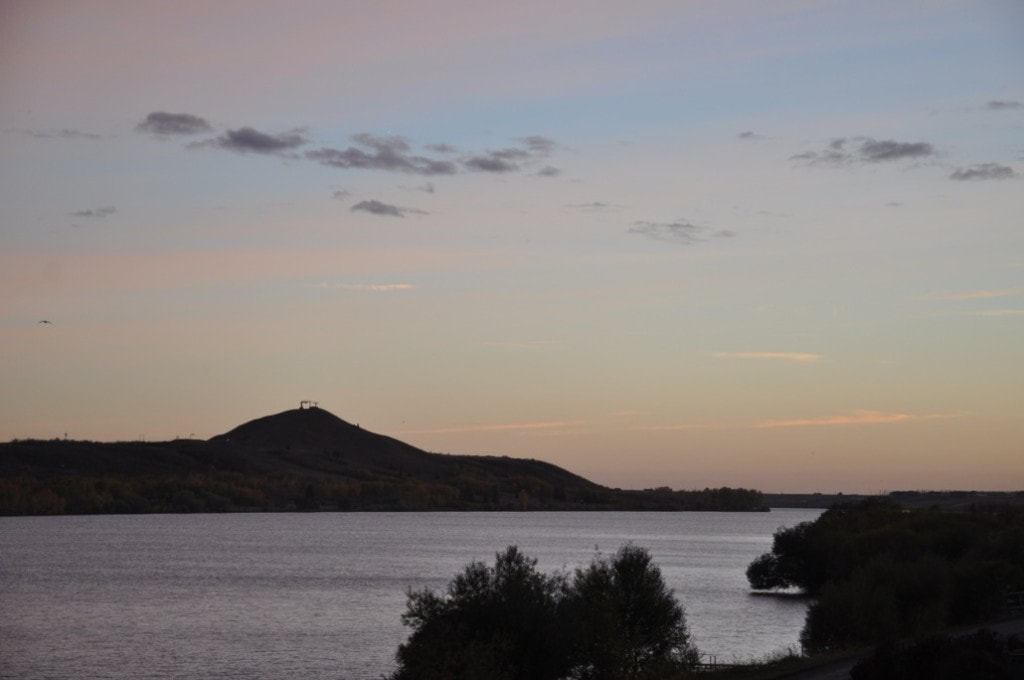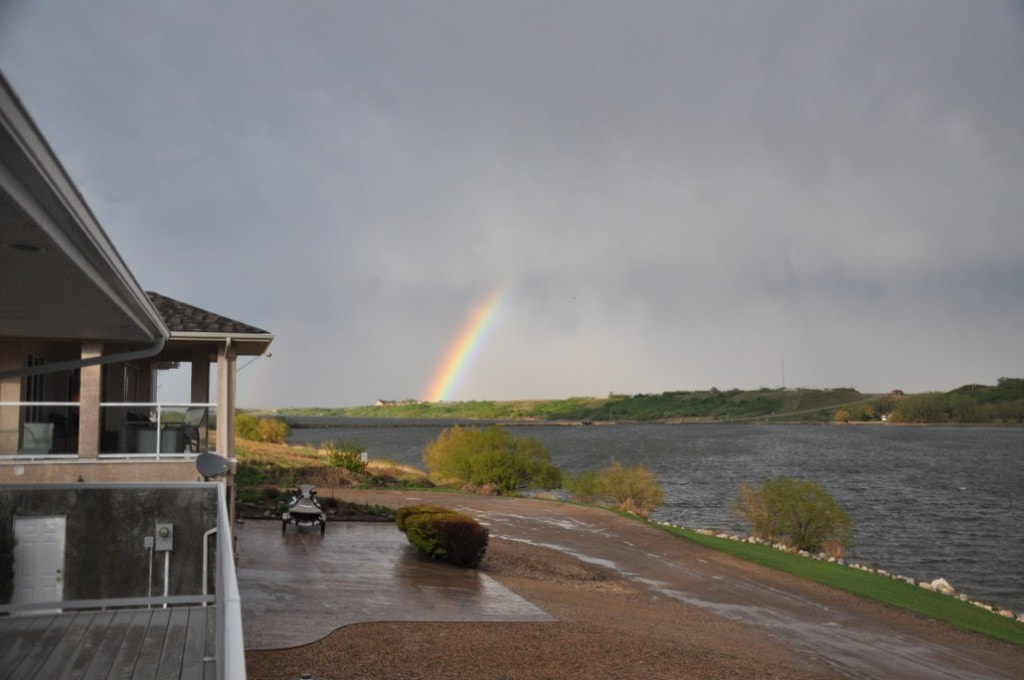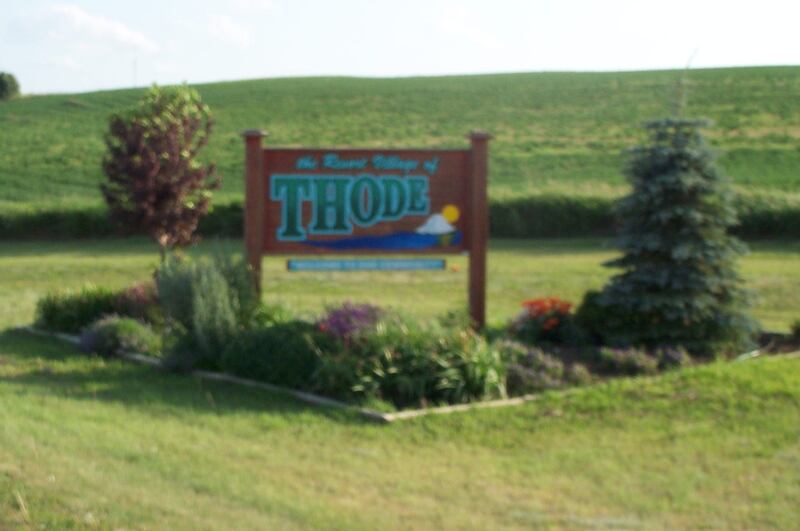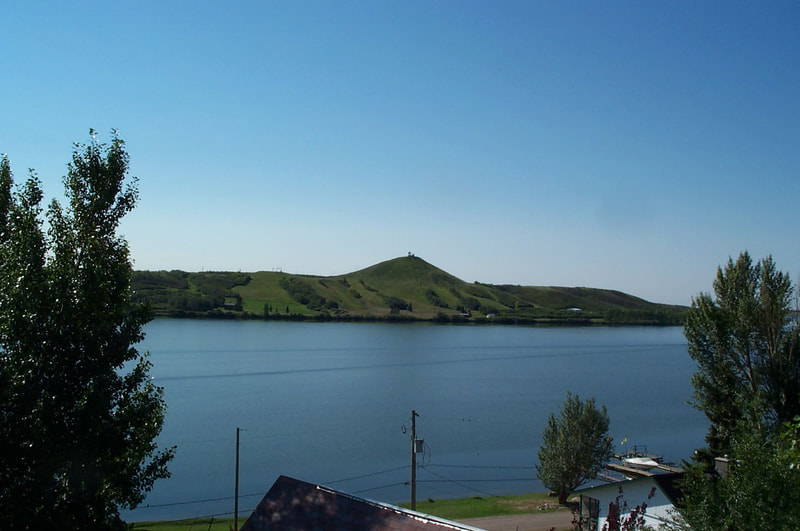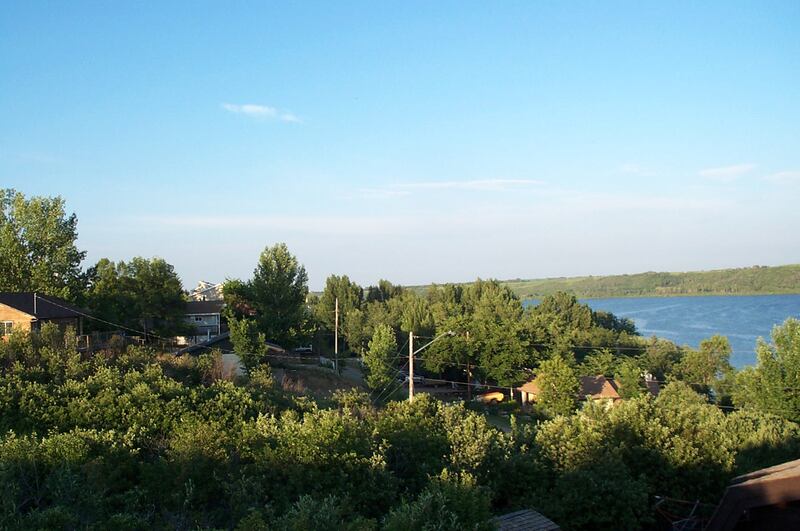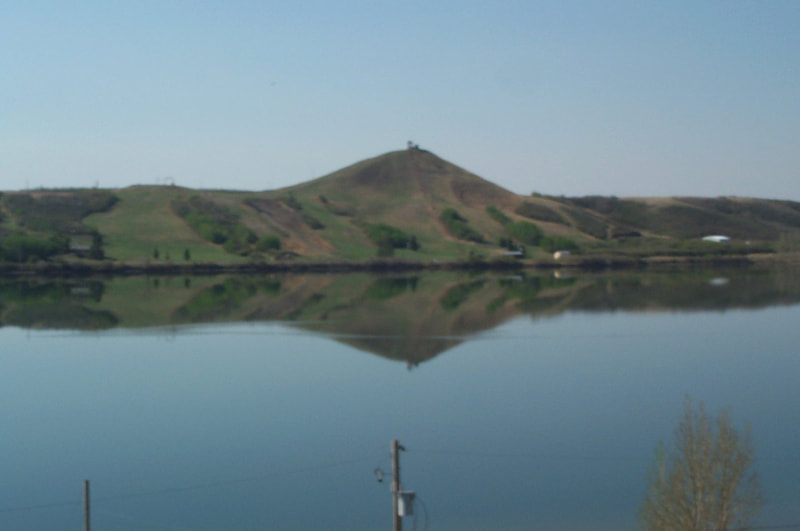|
Thode is a resort village located just 20 minutes south of Saskatoon on Highway 11. Nestled along the banks of Blackstrap Lake, the Village is populated by approximately 160 permanent residents as well as many summer residents.
There is a mix of seasonal cottages and year round homes. Although small in size, the Village of Thode provides many services to its residents, including roadside garbage pickup, recycling bin and road maintenance. The residents can take advantage of the playground, beach and swimming area and Village Centre (available for rent). Nearby is the Blackstrap Provincial Park, www.saskparks.net/Blackstrap, which provides a great place to relax. In the summer, enjoy camping, swimming, fishing, sailing and windsurfing; in the winter, cross-country skiing, ice fishing and more. The closest Town with services is Dundurn (approximately 7 km), www.townofdundurn.ca, which has a post office, restaurants, elementary school, churches, skating rinks, and clubs. |
History
History of BlackStrap and Thode
Thode History
Thode is located on the north-west shore of Lake Blackstrap directly across from the main beach at Blackstrap Provincial Park, and is home to approximately 156 people who live there year round.
Most of the people in Thode live either directly on the lake shore, or have an unobstructed view over the lakeshore road which separates them from the lake. The Resort Village of Thode was incorporated on January 1, 1981.
Blackstrap History
The Blackstrap Valley is a glacial spillway, created by the retreat of the Wisconsin glacier, which ended approximately 10,000 years ago. The current reservoir area encompasses two formerly small, marshy lakes, Theresa Lake and Blackstrap Lake.
Before contact, First Nations peoples used the valley, which provided them with opportunities for hunting and shelter. When settlers came to the area, they cultivated much of the flat, dry land of the valley, including some land which is now under the reservoir.
The extreme drought experienced during the Great Depression of 1929-1939 convinced many settlers that it was desirable to construct a dam across the South Saskatchewan River. This would help to irrigate large sections of the semi-arid farmland adjacent to the river. Construction began on the Gardiner dam in 1959, and it was completed in 1967. The dam also provided water for a gravity-feed irrigation system to the agricultural region southeast of Saskatoon, as well as water for drinking and industrial purposes. This new water system required the construction of canals and a series of reservoirs along the route. The Blackstrap reservoir was the largest reservoir in this system. It required dams at either end of the reservoir, as well as a small levy. Construction of the dams began in 1966. Two years later, the 14.4 km long and 0.8 km wide reservoir was filled. It was soon apparent that the Blackstrap Reservoir had great recreational value for the people of Saskatoon and area, who had few fishing and deep-water boating opportunities within an easy day drive. Upon completion of the reservoir, the Saskatchewan parks system established the Blackstrap Recreation Site, which included 656 hectares along the east side of the lake. The site encompassed beachfront, and facilities for boating, camping, and other recreation opportunities.
When the 1971 Canada Winter Games was awarded to Saskatoon, Blackstrap was identified as the most feasible spot for alpine and cross-country skiing events. In 1969, land was acquired at the top of valley for construction of the 46-metre “mountain” to create skiing runs that were long enough for the games. Blackstrap was designated a provincial park in 1986.
History of Thode - by P.G Niven
Click on the image below to see the entire overview.
Thode History
Thode is located on the north-west shore of Lake Blackstrap directly across from the main beach at Blackstrap Provincial Park, and is home to approximately 156 people who live there year round.
Most of the people in Thode live either directly on the lake shore, or have an unobstructed view over the lakeshore road which separates them from the lake. The Resort Village of Thode was incorporated on January 1, 1981.
Blackstrap History
The Blackstrap Valley is a glacial spillway, created by the retreat of the Wisconsin glacier, which ended approximately 10,000 years ago. The current reservoir area encompasses two formerly small, marshy lakes, Theresa Lake and Blackstrap Lake.
Before contact, First Nations peoples used the valley, which provided them with opportunities for hunting and shelter. When settlers came to the area, they cultivated much of the flat, dry land of the valley, including some land which is now under the reservoir.
The extreme drought experienced during the Great Depression of 1929-1939 convinced many settlers that it was desirable to construct a dam across the South Saskatchewan River. This would help to irrigate large sections of the semi-arid farmland adjacent to the river. Construction began on the Gardiner dam in 1959, and it was completed in 1967. The dam also provided water for a gravity-feed irrigation system to the agricultural region southeast of Saskatoon, as well as water for drinking and industrial purposes. This new water system required the construction of canals and a series of reservoirs along the route. The Blackstrap reservoir was the largest reservoir in this system. It required dams at either end of the reservoir, as well as a small levy. Construction of the dams began in 1966. Two years later, the 14.4 km long and 0.8 km wide reservoir was filled. It was soon apparent that the Blackstrap Reservoir had great recreational value for the people of Saskatoon and area, who had few fishing and deep-water boating opportunities within an easy day drive. Upon completion of the reservoir, the Saskatchewan parks system established the Blackstrap Recreation Site, which included 656 hectares along the east side of the lake. The site encompassed beachfront, and facilities for boating, camping, and other recreation opportunities.
When the 1971 Canada Winter Games was awarded to Saskatoon, Blackstrap was identified as the most feasible spot for alpine and cross-country skiing events. In 1969, land was acquired at the top of valley for construction of the 46-metre “mountain” to create skiing runs that were long enough for the games. Blackstrap was designated a provincial park in 1986.
History of Thode - by P.G Niven
Click on the image below to see the entire overview.
